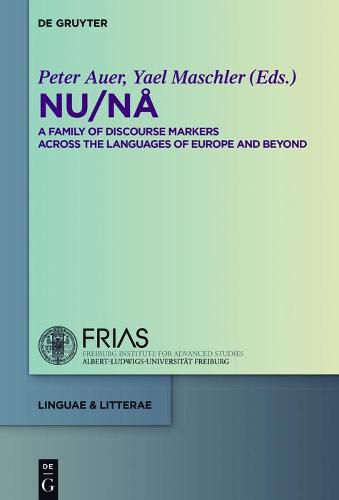Readings Newsletter
Become a Readings Member to make your shopping experience even easier.
Sign in or sign up for free!
You’re not far away from qualifying for FREE standard shipping within Australia
You’ve qualified for FREE standard shipping within Australia
The cart is loading…






This title is printed to order. This book may have been self-published. If so, we cannot guarantee the quality of the content. In the main most books will have gone through the editing process however some may not. We therefore suggest that you be aware of this before ordering this book. If in doubt check either the author or publisher’s details as we are unable to accept any returns unless they are faulty. Please contact us if you have any questions.
This book, situated within the framework of Comparative Interactional Linguistics, explores a family of fourteen discourse markers across the languages of Europe and beyond (Yiddish, Hebrew, Russian, Polish, Romani, Estonian, Finnish, Upper Saxonian and Standard German, Dutch, Icelandic, and Swedish), arguing that they go back to one, possibly two, particles: NU/NA.
Each chapter analyzes the use of one of the NU/NA family members in a particular language, usually on the basis of conversational data, feeding into a comprehensive chapter on the structure, function, and history of these particles. The approach taken in this volume broadens the functional linguistic concept of ‘structure’ to include the sequential positioning of the particles and their composition, and the concept of ‘function’ to include the conversational actions performed in interaction. Employing conversation analytic methodology thus enables a study of the ways these particles acquire meaning within certain sequential and action environments – both cross-linguistically and with regard to the grammaticization of the particles. All this sheds light on the borrowing patterns of NU/NA across the languages.
With contributions by Peter Auer, Galina B. Bolden, Gonen Dori-Hacohen, Andrea Golato, Harrie Mazeland, Auli Hakulinen, Helga Hilmisdottir, Leelo Keevallik, Hanna Lehti-Eklund, Anna Lindstroem, Yael Maschler, Yaron Matras, Gertrud Reershemius, Mirja Saari, Lea Sawicki, Marja-Leena Sorjonen, Heidi Vepsalainen and Matylda Weidner.
$9.00 standard shipping within Australia
FREE standard shipping within Australia for orders over $100.00
Express & International shipping calculated at checkout
This title is printed to order. This book may have been self-published. If so, we cannot guarantee the quality of the content. In the main most books will have gone through the editing process however some may not. We therefore suggest that you be aware of this before ordering this book. If in doubt check either the author or publisher’s details as we are unable to accept any returns unless they are faulty. Please contact us if you have any questions.
This book, situated within the framework of Comparative Interactional Linguistics, explores a family of fourteen discourse markers across the languages of Europe and beyond (Yiddish, Hebrew, Russian, Polish, Romani, Estonian, Finnish, Upper Saxonian and Standard German, Dutch, Icelandic, and Swedish), arguing that they go back to one, possibly two, particles: NU/NA.
Each chapter analyzes the use of one of the NU/NA family members in a particular language, usually on the basis of conversational data, feeding into a comprehensive chapter on the structure, function, and history of these particles. The approach taken in this volume broadens the functional linguistic concept of ‘structure’ to include the sequential positioning of the particles and their composition, and the concept of ‘function’ to include the conversational actions performed in interaction. Employing conversation analytic methodology thus enables a study of the ways these particles acquire meaning within certain sequential and action environments – both cross-linguistically and with regard to the grammaticization of the particles. All this sheds light on the borrowing patterns of NU/NA across the languages.
With contributions by Peter Auer, Galina B. Bolden, Gonen Dori-Hacohen, Andrea Golato, Harrie Mazeland, Auli Hakulinen, Helga Hilmisdottir, Leelo Keevallik, Hanna Lehti-Eklund, Anna Lindstroem, Yael Maschler, Yaron Matras, Gertrud Reershemius, Mirja Saari, Lea Sawicki, Marja-Leena Sorjonen, Heidi Vepsalainen and Matylda Weidner.